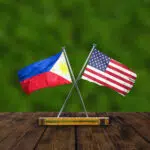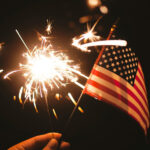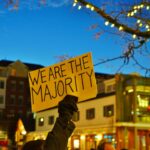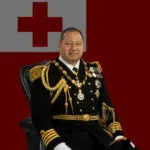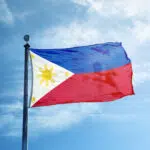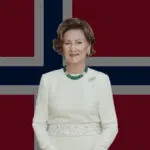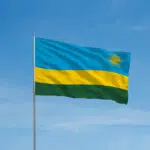Philippine Republic Day, held annually on July 4, is the celebration of the Philippines’ independence. The holiday, also called Philippine–American Friendship Day, was once an official holiday with the title Independence Day. It is a commemoration of the Treaty of Manila, which was signed in 1946, liberating the Philippines from American rule. This day marks the end of over 48 years of American rule lasting from 1898 to 1946.
History of Philippine Republic Day
The Philippines has a long history. It was the only South-East Asian country colonized by Western entities. It does not follow Hinduism or Buddhism. Its population consists of people who came from other Asian countries in waves as immigrants. There are 175 ethnic groups with diverse languages. A shared Filipino identity has only started emerging recently. Islam was introduced in the 1500s. Ferdinand Magellan was the first Spanish explorer there in the mid-1500s. Spain tried to enforce Catholicism over the Filipinos, but Islam remained. Their long and often turbulent history has resulted in resilient people. Their families are their pride and joy, and they are very religious. They are very respectful people who tend to help each other. They love celebrations and parties, and their Christmas celebrations start in August.
From 1898 to 1946, the Philippine Islands were under American control, first as a territory and then, beginning in 1935, as a commonwealth. During World War II, the Empire of Japan invaded the islands from the Commonwealth government-in-exile. The fights were prolonged and severe. Some Japanese soldiers fought until Japan’s final capitulation on September 2, 1945. On July 4, 1946, the republic achieved complete independence.
Manuel Roxas retook his oath as the first President of the Republic of the Philippines, removing the promise of allegiance to the United States of America that was essential before attaining independence. International recognition was eventually secured when governments signed treaties with the new republic. It was impolitic to remind the population of the former Third Republic after the 1935 Constitution was suspended under martial law and later supplanted by the 1972 Constitution.
Philippine Republic Day timeline
In October, a campaign to reclaim the country begins.
On July 4, the country declares complete independence.
Under President Corazón C. Aquino, the tradition of commemorating Republic Day as a non-working holiday is legally ended.
President Fidel V. Ramos declared the day Republic Day in 1996.
Philippine Republic Day FAQs
What distinguishes the Philippines from other countries?
The Philippines is also extremely unique in that it is the world’s second-largest archipelago, consisting of over 7,500 islands, only 2,000 of which are populated and the remaining 5,000 are unidentified.
What is the Philippines famous for?
The Philippines is well-known for its stunning beaches and luscious fruit. The group of islands, which is located in Southeast Asia, was named after King Philip II of Spain.
In the Philippines, how do you say hello?
“Kumusta” is the most obvious method to say hello in Filipino, yet it isn’t the only way Filipinos greet one another.
How to Observe Philippine Republic Day
Enjoy Philippine cuisine
The cuisine of the Philippines boasts several amazing delicacies. There's no better way to commemorate the Philippines' independence than by selecting a region and making one of its traditional dishes!
Sing or listen to the national anthem
If you've never heard the Philippine national song, this is the time. It's a lovely, patriotic song written by Julián Felipe and you can play it at home and sing along by downloading and memorizing the lyrics.
Participate in the military parade
The annual military parade is also a sight to behold. If you're in the Philippines or planning a trip there in July, make sure you get a seat to attend the parade!
5 Facts About The Philippines
World's longest underground river
The Puerto Princesa Subterranean River National Park, which stretches 24 kilometers beneath the St Paul's Mountain Range on the island of Palawan, was formed millions of years ago.
170 different languages
In the Philippines, at least more than 170 languages are spoken.
More volcanoes than towns
Camiguin is only 14 miles long and 8.5 miles wide, but it has more volcanoes than settlements.
Home to Asia's first basketball league
In the Philippines, basketball is a national passion.
The Monkey-Eating Eagle is the country's official bird
The Philippine Eagle is also known, albeit unfairly, as the monkey-eating eagle even if it doesn't eat monkeys, but pigs, snakes, and bats.
Why Philippine Republic Day is Important
The Philippines had two days of independence
The first, on June 12, commemorates the day the islands gained independence from Spanish domination. American forces, however, occupied the Philippines until 1946. Independence occurred on July 4, the same day as American Independence Day, but some Filipinos consider June 12 to be their legitimate day of independence.
Proud heritage
The original version of their flag, unfurled in 1898, is the one that Filipinos proudly fly today. The white triangle on the flag denotes equality, while the sunburst inside represents the eight provinces that fought against Spain. The blue stripe represents peace, truth, and justice, while the red stripe represents patriotism and valor. The three stars represent Luzon, Visayas, and Mindanao, the three island groups.
Amazing place to visit
The Philippines is a great destination for vacationers looking to enjoy amazing landscapes, beautiful beaches, and friendly locals. There are colorful celebrations all year. Try to find where they make their traditional costumes from pineapple fibers.
Philippine Republic Day dates
| Year | Date | Day |
|---|---|---|
| 2025 | July 4 | Friday |
| 2026 | July 4 | Saturday |
| 2027 | July 4 | Sunday |
| 2028 | July 4 | Tuesday |
| 2029 | July 4 | Wednesday |




